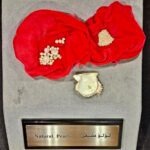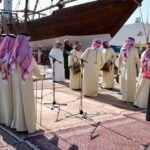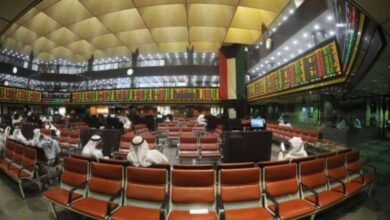Preserving Kuwait’s Maritime Heritage
When the Maritime Museum opened in January 2010, with a grand display of fanfare and folklore, it ensured that Kuwait’s great age of sail would never be forgotten. Recently reopened after renovations, the museum continues paying tribute to the days when just about every family in Kuwait had a stake in the sea trade, either as shipbuilders, sailors, merchants, or pearl divers.
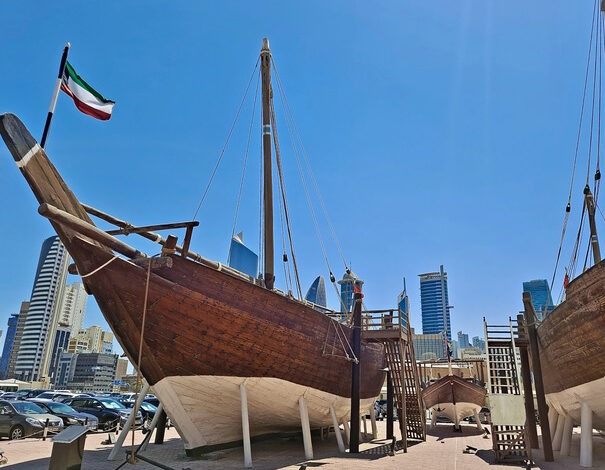
On 24th February, 1912, the day after his twenty-third birthday, Danish explorer Barclay Raunkiaer left Kuwait on a perilous desert journey by camel caravan. His goal was to find a base for a Danish expedition into the great southern desert of Arabia, then quite unknown to the Western world.


By Claudia Farkas Al Rashoud
Special to The Times Kuwait
Housed in an old school gymnasium, the small but interesting museum is cleverly designed to recreate the feeling of being inside a ship. Dark wood, dim lighting, and a shiny floor that looks like it is wet and slippery from sea spray enhance the maritime mood.
Some exhibits describe how Kuwait became a maritime nation. With no known natural resources, the people who settled here around four centuries ago faced a harsh existence, with the huge natural harbor Kuwait’s only advantage. The country’s foremost maritime historian and author, Dr. Ya’qub Al Hijji, addressed this subject in a talk he gave at the museum.

“When you think of our history and how most of our ancestors arrived from the interior of Arabia, having never even tasted fish nor swam in the sea, and then went on to become great shipbuilders, sailors, and pearl divers, it really is amazing. And it’s also amazing when you think of what a small population we had and yet what a galaxy of master shipbuilders we produced,” Dr. Al Hijji mused.
Dr Al Hijji was instrumental in the planning and design of the museum, with his involvement going back many years. He also donated rare items from his private collection of maritime artifacts. According to the museum brochure, “When Kuwait was a small fishing village… its people built small fishing boats and larger ones to trade with their neighbors. Later on they started building other types of sailing ships for their annual trips to the pearling grounds near their shores. When the merchants of Kuwait started to trade directly with India, the shipbuilders of Kuwait built large deep-sea ships… capable of sailing in the Arabian Sea and Indian Ocean.”
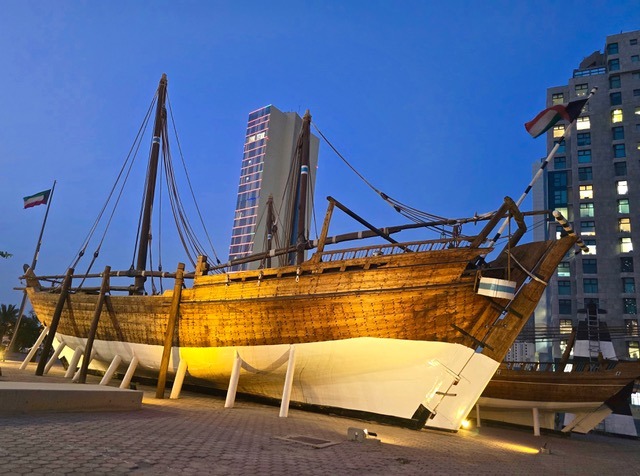
Arabian sailing ships hold one of the longest traditions of commercial seafaring in the world, undertaking their seasonal voyages up until the end of the 1950s, powered only by the wind. The number of these ships steadily dwindled as ocean liners and freighters proved faster and more efficient. Some wooden ships were converted from sail to diesel, but more and more ship owners found the traditional craft no longer financially viable. Of great consequence was the fact that seamen could find a comfortable and secure livelihood in a variety of jobs spawned by the oil industry. A few vessels were still built at the request of the Kuwait government and private individuals, but by the turn of the last century, the only wooden ships being built were decorative models.

The shipbuilders’ simple hand tools are on display, near a large black and white photograph of Kuwait when it was a small walled town of mud houses, completely unrecognizable from today’s crowded city of concrete, glass, and steel.
Among photographs of famous Kuwaiti shipbuilders is Hajji Ali Abdullah Abdul Rasool, Kuwait’s last great master shipbuilder. Up until shortly before his death in 1995 at the age of around 90, Hajji Ali still worked in his shipyard in Doha Village on the northern shores of Kuwait Bay.
The story of the freshwater trade is told by exhibits of goatskin water bags and models and pictures of ships converted to carry the precious cargo. As Kuwait town grew, the water provided by the few scattered wells was no longer sufficient for the increasing population. In 1925, the first water boom sailed to the Shatt Al Arab River in Iraq and brought back barrels filled with fresh water. The water trade rapidly expanded and soon many ships were plying the sea between Kuwait and Iraq.
The water booms were specially adapted for their cargo. Large, water-filled tin cans were tipped into water tanks in the hold through slots in the deck.
By Claudia Farkas Al Rashoud
Originally from California, Claudia Farkas Al Rashoud has enjoyed working in Kuwait since 1979, when she became the first professional female photojournalist for the Arab Times newspaper. She has written five books, with photographs, about Kuwait. Working as a freelance photographer for London-based picture libraries, her articles and photographs have appeared in many publications. She also serves as an ethnographic researcher and consultant. Claudia has also worked in the field of animal welfare in Kuwait for many years. All proceeds from her books and other work benefit Touch of Hope Kuwait, the largest animal shelter in the country. As a founding board member of the Kuwait Society for Animal Welfare and director of the education program, she gives presentations on animal welfare for schools, universities and community groups. She also speaks on other subjects including Kuwait’s history, heritage, natural history and environment, journalism and photography, and palliative care.
Please see @claudia_alrashoud @touch_of_hope_q8 @ksaw_q8







